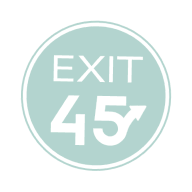Preparing to Sell Your Business - Systematize and Document Your Business Operations
In the last issue (#35), we discussed Preparing to Sell Your Business – Improving Profitability. This issue will discuss Preparing to Sell Your Business – Systematize and Document Your Business Operations.
" The most successful business man is the man who holds onto the old just as long as it is good and grabs the new just as soon as it is better. " Robert P. Vanderpoel
Preparing to Sell Your Business - Systematize and Document Your Business Operations
Especially in smaller businesses, buyers are concerned the business can continue to operate profitably after the owner’s departure. By systemizing and documenting your business operations and by developing second-level management, you can alleviate that obstacle.
Businesses are often acquired by first-time buyers (who are also first-time entrepreneurs), and the existence of documented business systems and key employees helps provide a high level of comfort for apprehensive buyers. The existence of this type of documentation in small businesses is rare, so its development creates an immediate and very favorable impression on prospective buyers. It helps distinguish your business from others that might be available for acquisition.
Benefits of systematizing and documenting your operations
Upon completion, the other significant advantages to systematizing and documenting your operations is it helps in: 1) training new employees; 2) making it easier to delegate oversight of procedures, thus helping develop key employees; 3) enabling you to spend more time working on your business rather than working in your business, which should lead to improved profitability; and 4) ultimately, simplifying a buyer’s due diligence review.
In addition, the process of reviewing your procedures for purposes of documenting them may surface opportunities to improve the efficiencies and results of your operations. There may be redundancies or unnecessary steps that can be eliminated or improved. Encouraging employees involved in the review process to make suggestions for improvements might yield significant opportunities for enhancements.
Systems to document
Which systems should you document? All businesses are different, but many have the following chronological/logistical systems:
A process to develop new customer leads … results in opportunities and processes for sales presentations to attempt to close the sale, and when successful … results in the need to produce the product or service which can include multiple processes (such as purchasing, scheduling, assembly, etc.) … which results in the need to deliver the product or service … all of which results in the need to account for the transactions (payroll, expenses, invoicing, collecting, etc.). In addition, many businesses have post-sale interaction with customers (customer service, complaints handling, attempts to sell again to existing customers, etc.).
Where to start
A good place to start with systems documentation is with flowcharts of your business’ overall processes with more detailed flowcharts of the component processes. After doing so, requiring employees to document their daily procedures and job functions provides another level of detail. Hiring outside advisors to help develop systems documentation can help expedite the process with the additional benefit of receiving independent third-party recommendations for improvements.
Types of documentation
Other types of documentation that should be developed, accumulated and organized to prepare for the sale of your business include:
- Organization charts
- Job descriptions
- Key employee agreements
- Employee manuals
- Employee incentive programs
- Employee benefit programs
- Corporate documents and minutes
- Permits and licensing agreements/documents
- Facility and equipment lease agreements
- Contracts
- Customer agreements
- Supplier agreements
- Loan documentation
- Legal issues documentation
- Intangible asset documentation (trademarks, patents, etc.)
Competitive analysis
It’s also helpful to document any informal agreements and understandings that might exist with employees, customers or suppliers, as well as the history of those relationships. Also, while you are working on your business, identifying your competitors and documenting your strengths and weaknesses versus the competition is valuable documentation to prepare for a sale of your business.
Second-level management
And last, but not least, it is so very important to …..


